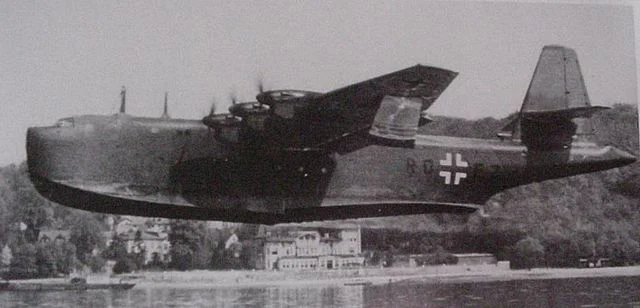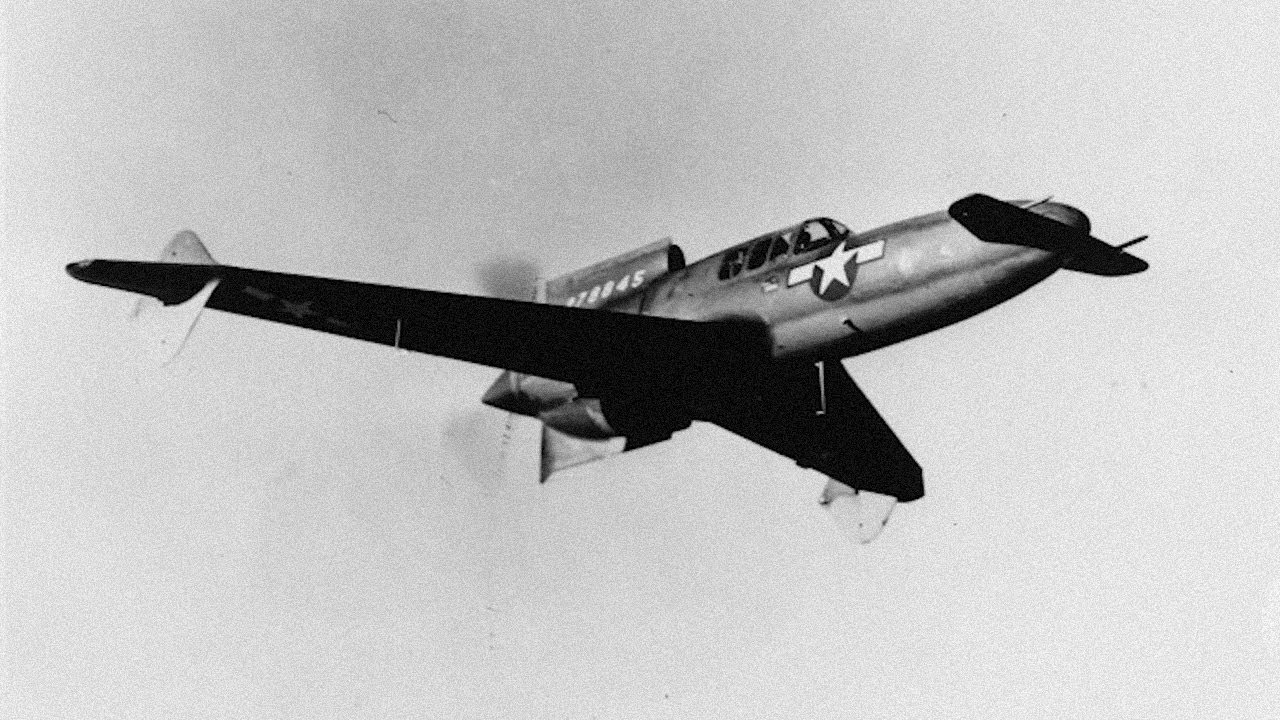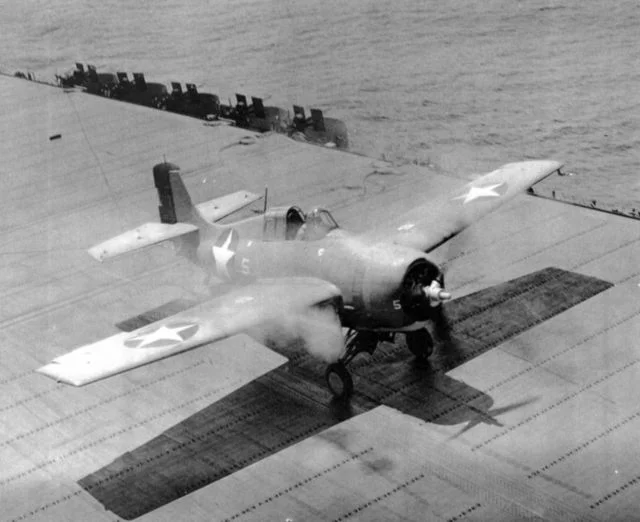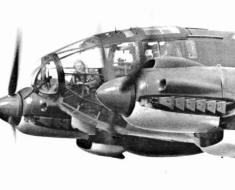The Avro Lancaster stands as one of the most distinguished heavy bombers of the Second World War, renowned for its remarkable role in the Allied victory.
This aircraft emerged from the urgent need for a powerful bomber that could surpass the limitations of its predecessors. It not only played a pivotal role in various critical missions but also became synonymous with the Allied bombing campaign against Nazi Germany.
Contents
Origins and the Manchester
The journey of the Avro Lancaster, from its conceptual beginnings to becoming the backbone of the RAF’s bomber command, is a tale of innovation, determination, and swift adaptation to the demands of wartime aviation.
This narrative starts in the early years of the Second World War, amid the pressing need for an aircraft capable of delivering a decisive blow against the Axis powers.
Read More: Embraer’s KC-390 is a Transport for Modern Times
The Avro Lancaster’s story cannot be told without first acknowledging the challenges faced by its predecessor, the Avro Manchester.
The Manchester, although ambitious in its design, suffered from significant drawbacks due to its unreliable Vulture engines, which led to numerous operational failures.
These shortcomings highlighted the need for a new type of heavy bomber, one that could meet and exceed the demands of long-range bombing missions.

Roy Chadwick, Avro’s chief designer, stepped into the spotlight and played a pivotal role in the Lancaster’s evolution.
Drawing from the Manchester’s design, Chadwick proposed a radical overhaul, opting to replace the problematic Vulture engines with four more reliable and powerful Rolls-Royce Merlin engines.
This decision marked a significant turning point in the project. Renowned for its performance in the Spitfire and Hurricane fighters, the Merlin engine promised superior speed, altitude, and payload capacity, crucial for the success of bombing missions over Europe.
A Race to Production
Working tirelessly, Chadwick and his team made several modifications to the Manchester’s airframe to fit the additional engines and accommodate the increased payload.
They extended the wingspan to provide the necessary lift for the heavier loads and modified the fuselage to carry a wider array of armaments and bombs.
These design changes addressed the Manchester’s limitations and propelled the Lancaster to the forefront of military aviation technology.

The Lancaster’s development became a race against time as the Avro team recognised the urgent need for a superior bomber to counter the growing threat of the Axis powers.
Their efforts led to the Lancaster’s maiden flight in January 1941, marking the dawn of a new era in aerial warfare. The Lancaster quickly demonstrated its worth, showcasing unmatched capabilities in range, payload, and versatility.
The swift development and deployment of the Lancaster played a crucial role in boosting the morale of the RAF’s Bomber Command.
The aircraft’s success stood as a testament to the designers’ ingenuity and the resilience of British engineering during a time of significant adversity.
The Lancaster didn’t just evolve from the Manchester’s shortcomings; it soared above them, becoming a symbol of hope and strength for the Allied forces.
Big Bombs and Long Range
Central to the Lancaster’s exceptional performance were the four Rolls-Royce Merlin engines. These powerhouses of propulsion granted the Lancaster unparalleled speed and altitude capabilities for its time, allowing it to evade enemy defences with relative ease.
The Merlin engines were renowned for their reliability, a stark contrast to the problematic engines of earlier bombers.
This reliability, combined with their power, enabled the Lancaster to carry substantial payloads over long distances, a critical requirement for the strategic bombing campaigns over Nazi-occupied Europe.
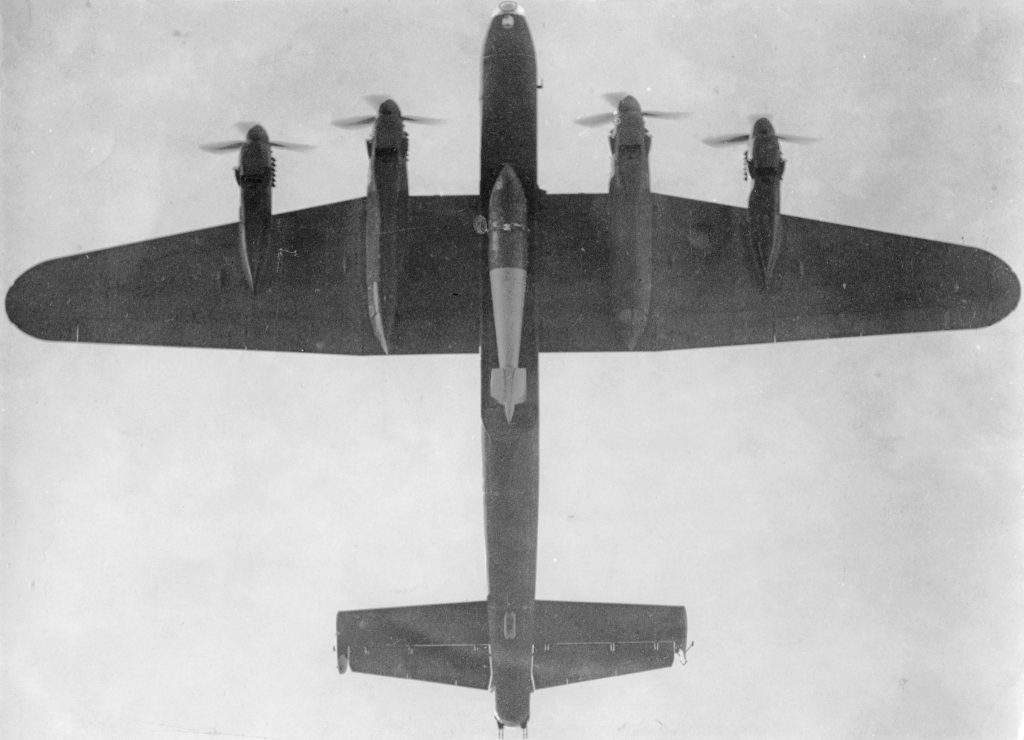
The Lancaster’s bomb bay stood out for its versatility and capacity, unparalleled by any other bomber of its time. It could carry a wide range of munitions, from standard explosive bombs to specialized ordnance like the “Grand Slam,” the largest conventional bomb used during the war.
This adaptability made the Lancaster a vital asset for a variety of missions, including precision bombing raids targeting specific, fortified structures.
Its bomb bay’s innovative design supported quick modifications, allowing crews to outfit the Lancaster with the appropriate weaponry as mission requirements evolved.
Read More: Focke-Wulf Fw 189c was Unique & Obscure
Defensive Armament
The Lancaster also boasted significant innovations in its defensive armament, featuring multiple machine gun turrets, including the distinctive tail turret, providing formidable protection against enemy fighters.
Extensive testing and development shaped the placement and design of these turrets, maximizing the coverage and effectiveness of the Lancaster’s defensive capabilities.
This careful design allowed the Lancaster to defend itself effectively in hostile skies, protecting its crew and payload on dangerous missions deep into enemy territory.
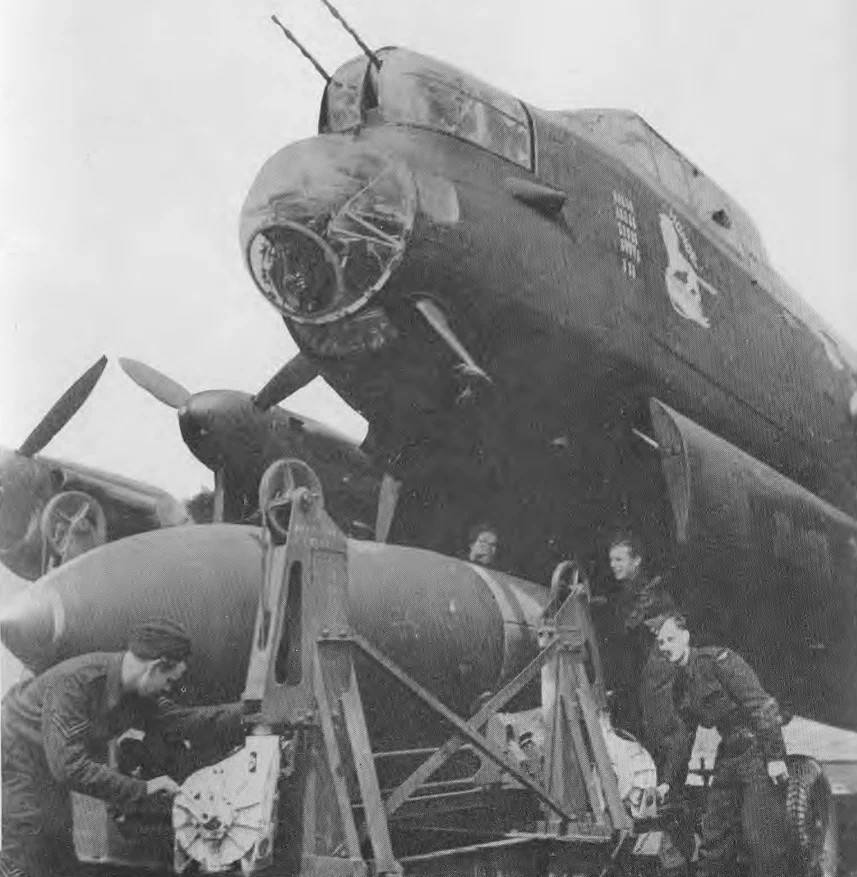
The Lancaster’s avionics and navigation systems, incorporating advanced technologies, were ahead of their time and enhanced its operational effectiveness.
These included sophisticated bomb aiming equipment and navigation aids, essential for the success of night bombing raids.
The Lancaster’s ability to deliver payloads with precision under the cover of darkness testified to its designers’ ingenuity and the advanced technology they employed.
Furthermore, the design of the Lancaster prioritised crew safety and comfort to a degree uncommon in bombers of that era.
Recognising the challenges of long-range bombing missions, the designers included features to improve the crew’s working conditions, thus maintaining their efficiency and morale over extended periods.
Notable Missions
The Avro Lancaster, a bastion of Allied air power during World War II, played a central role in several pivotal missions that not only demonstrated its exceptional capabilities but also significantly impacted the course of the conflict.
These missions, characterized by their audacity, precision, and strategic importance, underscore the Lancaster’s indelible mark on military aviation history.
The Dambusters Raid (Operation Chastise)
Operation Chastise, more widely known as the Dambusters Raid, stands as one of the most iconic missions the Lancaster undertook. On the night of 16-17 May 1943, this daring operation targeted the mighty dams of the Ruhr Valley in Germany.
The mission’s goal was to breach the dams and disrupt German industrial production by cutting off water supplies to key factories.
Modified to carry the revolutionary “bouncing bomb” Barnes Wallis designed, the Lancasters flew at extremely low altitudes to drop their payloads with pinpoint accuracy.
Despite facing heavy defences and challenging flying conditions, the raid managed to breach the Möhne and Edersee Dams, leading to widespread flooding and significant damage to the German war effort.
The crews’ bravery and the Lancaster’s technical prowess received widespread acclaim, delivering a significant psychological and material blow to Germany.

The Peenemünde Raid (Operation Hydra)
Operation Hydra, another critical mission, took place on the night of 17-18 August 1943, targeting the German V-weapon research facility at Peenemünde on the Baltic coast.
The mission aimed to disrupt the development of V-1 flying bombs and V-2 rockets, posing a significant threat to Allied cities.
Lancasters, alongside other bombers, carried out a meticulously planned attack, severely damaging the facility and delaying the German V-weapons program.
This mission highlighted the Lancaster’s capacity for conducting precision strikes on heavily defended targets, making a significant contribution to the Allied efforts to neutralize the V-weapon threat.
Read More: The He 111Z, a Tug for the Me 321 Cargo Glider
The Sinking of the Tirpitz
The Lancaster was also instrumental in the sinking of the German battleship Tirpitz, a mission that eliminated a major threat to Allied naval forces.
The Tirpitz, sister ship to the infamous Bismarck, was a formidable adversary that had been a constant menace to Allied shipping in the North Atlantic. On 12 November 1944, Lancasters from 617 Squadron, armed with Tallboy bombs, launched a precision strike against the Tirpitz, anchored in a Norwegian fjord.
The bombs penetrated the battleship’s armour, causing catastrophic damage and leading to its sinking. This mission underscored the Lancaster’s role in naval warfare, demonstrating its capacity to engage and destroy high-value maritime targets.

The Strategic Bombing of German Cities
Beyond these specific operations, the Lancaster was a workhorse of the RAF’s strategic bombing campaign, targeting German cities to undermine the enemy’s industrial capacity and morale.
Cities such as Hamburg, Dresden, and Berlin were subjected to extensive bombing raids by fleets of Lancasters, causing significant destruction.
These missions were controversial due to the high civilian casualties and the ethical implications of area bombing. Nonetheless, they were a critical component of the Allied strategy to weaken Germany’s ability to sustain its war effort.
Lancastrian
The Lancastrian was a remarkable adaptation of the Lancaster and emerged in the immediate post-war era, demonstrating a remarkable evolution from a wartime aircraft to a peacetime role.
This transformation reflects the ingenuity and adaptability of British aviation design, repurposing one of the most formidable bombers of World War II into a civil and military transport aircraft.
As the war drew to a close, the demand for long-range, high-capacity transport aircraft soared, driven by the needs of both civilian airlines for passenger service and military forces for logistics and personnel transport.
Recognizing the potential for converting surplus military aircraft into commercial airliners, Avro undertook the development of the Lancastrian by modifying the existing Lancaster bomber.

Modifications
The primary alteration involved the removal of the Lancaster’s military features, including its armament and bomb bay, replacing them with a new, streamlined fuselage section.
This modification allowed for a fully enclosed, pressurized cabin capable of accommodating passengers or cargo, depending on the configuration.
The resulting aircraft, while maintaining the Lancaster’s wings, tail assembly, and powerplants, presented a new profile, one suited to the peacetime skies.
The Lancastrian made its inaugural flight in 1945, swiftly entering service with both civilian airlines and the Royal Air Force.
For civilian use, the aircraft could carry up to 13 passengers over long distances, making it one of the early players in the nascent post-war international air travel market. Its military version, however, was configured to transport troops, VIPs, and critical cargo.
Notably, the Lancastrian played a significant role in pioneering routes and proving the viability of long-haul flights, including the challenging North Atlantic crossing, which was a considerable feat for the time.
Jet Engine Test Bed
Moreover, the Lancastrian was not just a stopgap measure but a testbed for innovation. It was used extensively for testing jet engines, contributing to the development of Britain’s jet propulsion capabilities.
These trials were instrumental in the transition from propeller-driven to jet-powered flight, marking the Lancastrian as a bridge between two eras of aviation.
Despite its contributions, the Lancastrian’s career as a civilian airliner was relatively brief. The advent of purpose-built commercial aircraft, specifically designed for passenger comfort and efficiency, soon overshadowed the converted bombers.
Additionally, the limitations inherent in adapting a wartime design for peacetime use, such as noise levels, limited passenger capacity, and the aircraft’s overall performance, led to its gradual replacement.

Removal from Service
The Avro Lancaster’s journey from its glory days as the backbone of the RAF’s Bomber Command during World War II to its eventual retirement from service is a narrative shaped by the evolution of military aviation and the changing strategic needs of the post-war world.
As the war concluded and the landscape of international relations transformed, so too did the requirements for military aircraft, leading to the Lancaster being phased out in favour of newer, more advanced models.
Following World War II, the Lancaster continued to serve in various roles, including maritime patrol, search and rescue, and even as a testbed for new aviation technologies.
However, the rapid advancements in aircraft design and technology during and after the war meant that the Lancaster, like many piston-engined bombers of its era, soon found itself outpaced by the emerging generation of faster, more efficient jet-powered aircraft.
Introduction of the Jet Engine
The introduction of jet engines represented a significant leap forward in aviation technology. Jet-powered aircraft boasted superior speed, altitude capabilities, and operational ranges compared to their propeller-driven counterparts.
This shift towards jet propulsion was not just a matter of performance but also of strategic doctrine.

The Cold War era required aircraft capable of delivering nuclear payloads over long distances, penetrating deep into enemy territory, and evading increasingly sophisticated air defence systems.
Designers developed jet bombers like the English Electric Canberra and later the Avro Vulcan with these needs in mind, marking the next generation of British military aviation.
Moreover, air power’s strategic role has evolved. The focus shifted from the strategic bombing campaigns that defined the Lancaster’s World War II service to nuclear deterrence and precision strikes, tasks the older Lancaster couldn’t perform.
Despite its impressive payload capacity and range, the Lancaster could not match the speed, altitude, and versatility of newer aircraft designed for the atomic age.
Read More: Heinkel He 178 First operational Turbojet Plane
Thus, the withdrawal of the Lancaster from front-line service did not stem from any single flaw in its design or capabilities but rather from the relentless advance of technological progress and strategic change. By the mid-1950s, most Lancasters had retired from active service, although a few remained in secondary roles or served with other countries’ air forces for some time afterwards.



